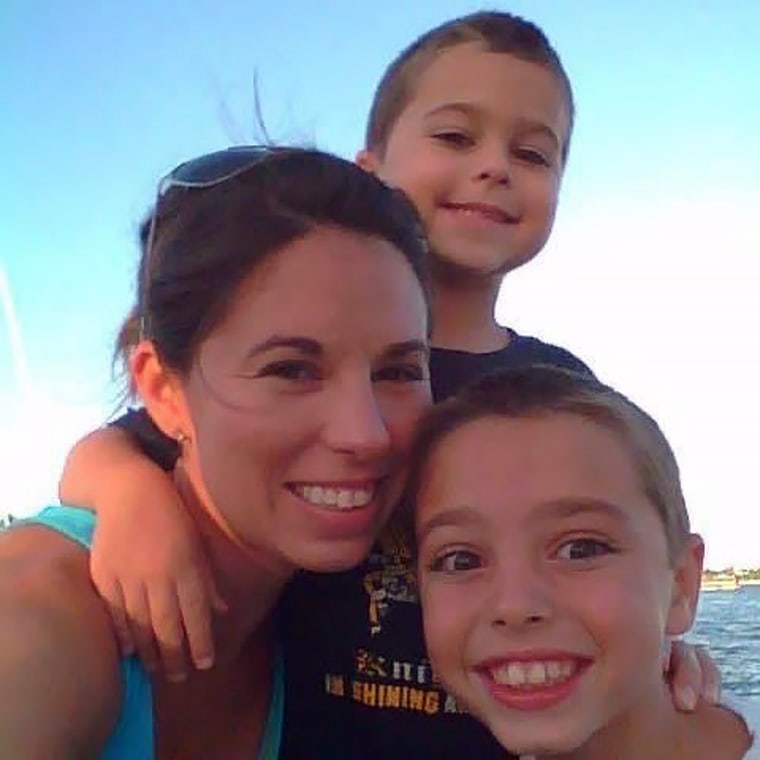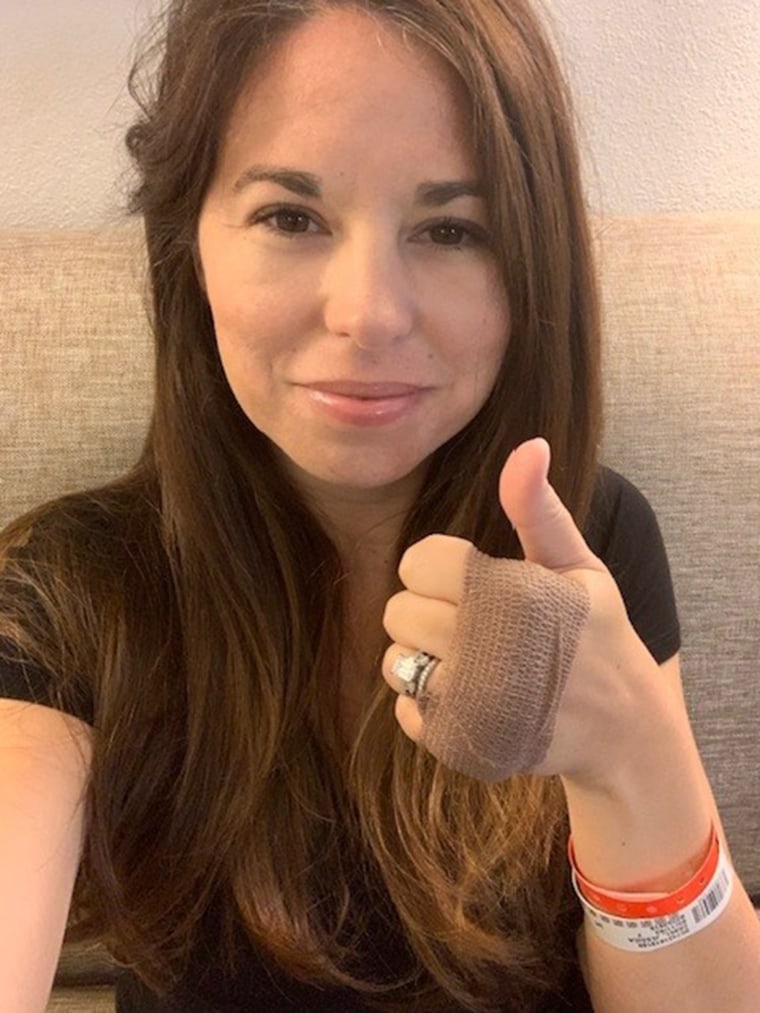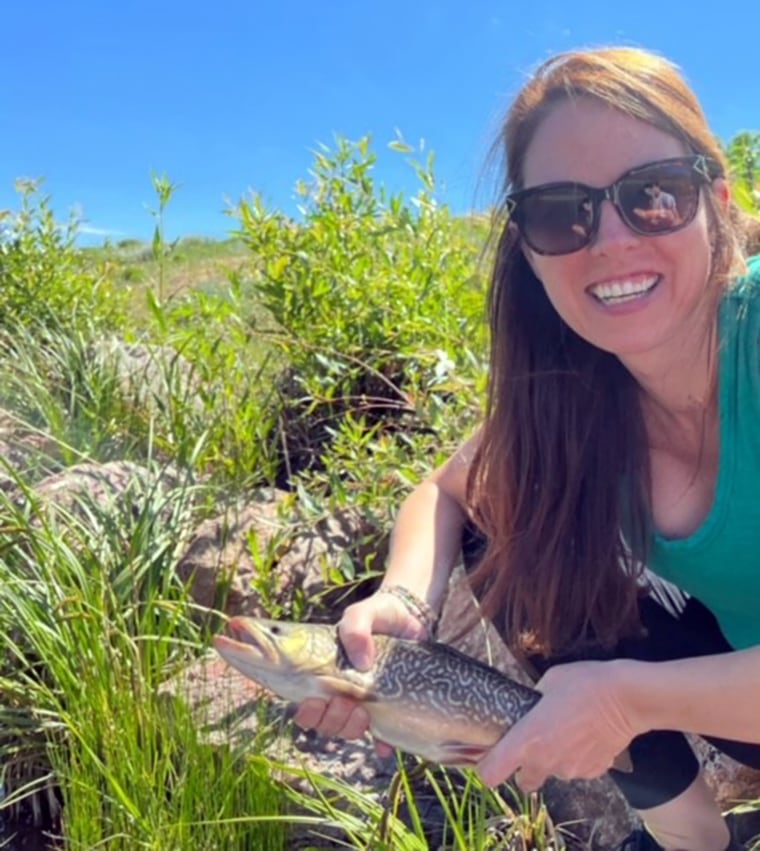Jessica Zabel shut the door on her breast cancer returning when she chose to have a preventive double mastectomy, but another nightmare was just beginning.
She started to feel constant pain on her rib cage under her armpit. It was on the side of one of her reconstructed breasts, but felt different from surgical pain or the pain from a broken bone.
“I just felt like I was on fire, like someone was holding a torch to my skin. Nothing made it better, and even just my clothes touching me was just unbearable,” Zabel, 39, who lives in Jupiter, Florida, told TODAY.
“The best way I could describe it is like if you burn yourself really bad and the next day when you get in the shower just that little bit of warm water makes it feel like on fire.”
Studies show 20% to 30% of women develop post-mastectomy pain syndrome (PMPS) after surgery, and the nerve pain — in the chest wall, armpit or arm — doesn’t go away over time, according to the American Cancer Society. Some estimates put the number even higher, 60% or more.
It happens when a nerve is damaged, stretched or irritated during a mastectomy, lumpectomy or an axillary dissection, when doctors look to see if the cancer has spread to lymph nodes in the armpit, said Dr. J. David Prologo, director of interventional radiology services at Emory Johns Creek Hospital near Atlanta.
“There are a lot of nerves that run through there, so it’s a well-established problem post-mastectomy,” said Prologo, an associate professor at Emory University School of Medicine.
He specializes in treating all kinds of nerve pain with cryoablation — a treatment that freezes nerves to prevent them from sending signals of agony to the brain. “I see patients in desperate pain every day,” Prologo said. The technique has been around for a decade, but it’s just recently been used to treat women with PMPS, he noted. One of his patients is Jessica Zabel.
'I was so fed up with everything'
In 2012, Zabel was relaxing on the couch when she adjusted her tank top and felt a lump in her breast. She was diagnosed with a very early form of breast cancer and underwent a lumpectomy, but the mom of two kept dreading the possibility of more tumors.
“It seemed like every time I went for a scan, there was a new little spot that needed to be biopsied, and I just didn’t want it hanging over my head at such a young age, with such a young family,” she said.

So in 2014, Zabel chose to have a prophylactic bilateral mastectomy, when both breasts are removed. “Let’s just not ever have to worry about this again,” she recalled thinking. “But it wasn’t so simple.”
She expected to have pain after the surgery, but found it never went away. Zabel described it as a constant, life-disrupting burning sensation. She tried nerve calming drugs, but couldn’t tolerate the side effects. She was prescribed opioid pain medication, but was concerned she needed more and more of it, and hated the way it made her feel.
“I just didn’t feel like myself. I felt altered. I kind of walked around all day feeling like I had had a few drinks. I felt sleepy and really grumpy,” Zabel said.
To avoid pain meds, she tried physical therapy, lidocaine patches, nerve block injections and surgical interventions, but nothing helped. Zabel couldn’t work or attend her kids’ school functions, and by the time she found out about the clinical trial to use cryoablation for PMPS at Emory University, she was out of hope.
“I was so fed up with everything. I was so sick and honestly just afraid one of those days I wasn’t going to come back home to my family,” she recalled of her mental state at the time.
Freezing the nerve
Cryoablation involves passing a needle, guided by a CT scan, to the damaged nerve to deliver extreme cold, which stops the nerve from sending pain signals. The minimally invasive outpatient treatment takes about 20 minutes and leaves no scar, Prologo said. Patients are awake but given sedation to feel relaxed and comfortable.

Besides shutting off the pain signal, the goal of the freezing is to degenerate the nerve so that it regenerates in the next six to eight months as “brand new” without the damage that caused it to go haywire, Prologo noted.
In a clinical trial of 14 women with PMPS, Prologo and his colleagues targeted one particular nerve — the intercostobrachial nerve in the armpit area — with cryoablation. Over 180 days after the procedure, the researchers saw significant improvements in patients’ self-reported average pain, worst pain and their quality of life, he said.
Because it’s a new application of an existing technique, there are no additional approvals required, and Prologo makes the procedure available to women now.
Zabel has received the treatment four times since 2018. That’s because she had more than one source of nerve pain, which Prologo targeted one by one, he said. She described it as a gradual improvement that ultimately led to a “night and day” difference, rating her daily pain level at 7 or 8 out of 10 before the treatment compared to 3 out of 10 on most days now.

She's working full time as a seafood distributor, is caring for her kids and doing most of the things that she enjoys, she said. She hopes she'll continue to improve.
"My main goal since the first day that this started was just to have my normal life back," Zabel said.
"I’m not taking any pain meds — or very, very rarely. ... I’m just thankful to be functioning and able to travel with my kids, drive them to school every day and just be present in their lives."
